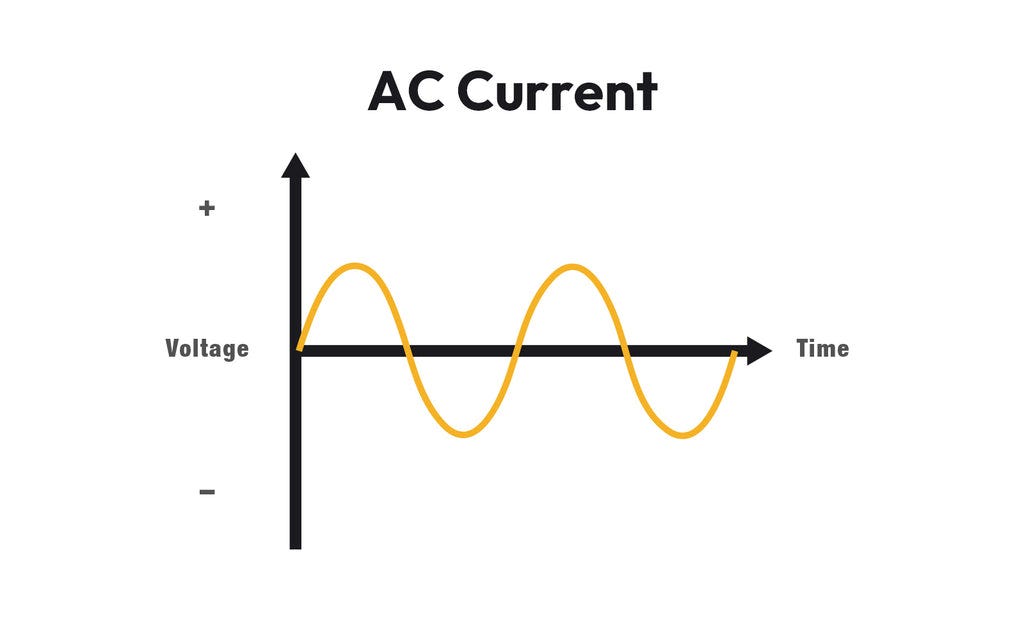Basics of Alternating Current
Ten Essential Concepts for Understanding AC Power
Alternating current (AC) is fundamental to electrical systems. It powers our homes, big manufacturing facilities, and small electronic devices.
Here are ten key things to begin to understand about AC power:
AC Current – Alternating Current (AC) is an electric current that periodically reverses direction, unlike Direct Current (DC), which flows in one direction.
Frequency – The rate at which AC current changes direction is called its frequency, measured in hertz (Hz). In the U.S., it's 60 Hz. In many other countries, it's 50 Hz.
Waveform Shape – AC current typically follows a sine wave, a smooth, repetitive oscillation, making it ideal for efficient energy transfer.

Sine wave. Image Source. Voltage Alternation – AC voltage constantly changes from positive to negative in cycles. This allows electricity to travel long distances more efficiently.
Step Up or Down with Transformers – AC power can be easily increased or decreased in voltage using transformers, making transmission over long distances practical while reducing power loss.
Generation of AC Power – AC is generated using alternators in power plants, which convert mechanical energy (from turbines) into electrical energy.
AC is Standard for Power Grids – AC is cheaper and easier to distribute over vast distances compared to DC, making it the preferred method for power transmission.
AC vs. DC in Electronics – Many modern devices use DC internally (like computers and smartphones), but they rely on AC from outlets, converted using adapters or power supplies.
Phase Difference – Phase difference is the angle between voltage and current waves. When they align perfectly, power delivery is most efficient.
Impedance – Impedance is the resistance to AC current flow, combining effects of resistance, inductance, and capacitance.

